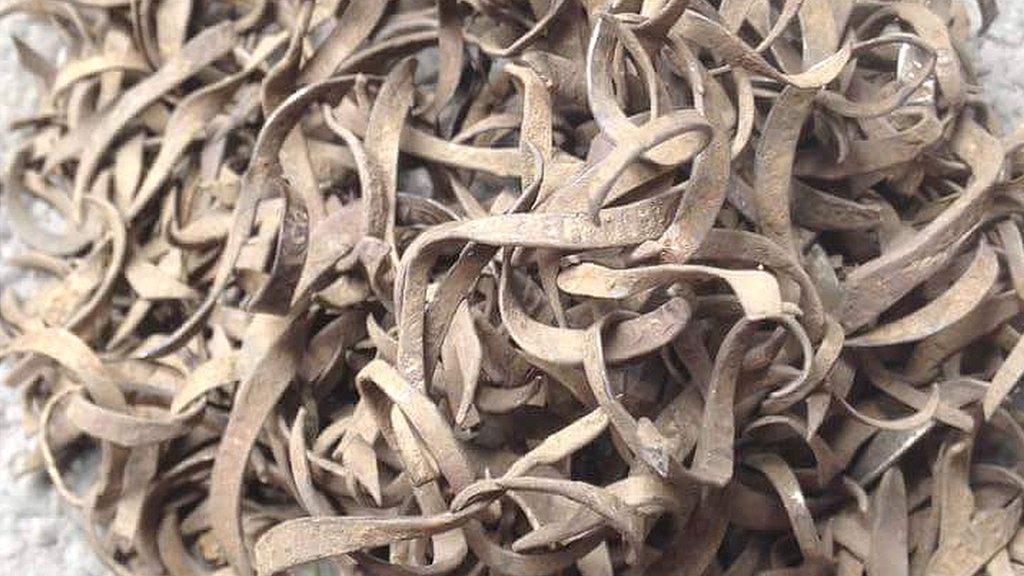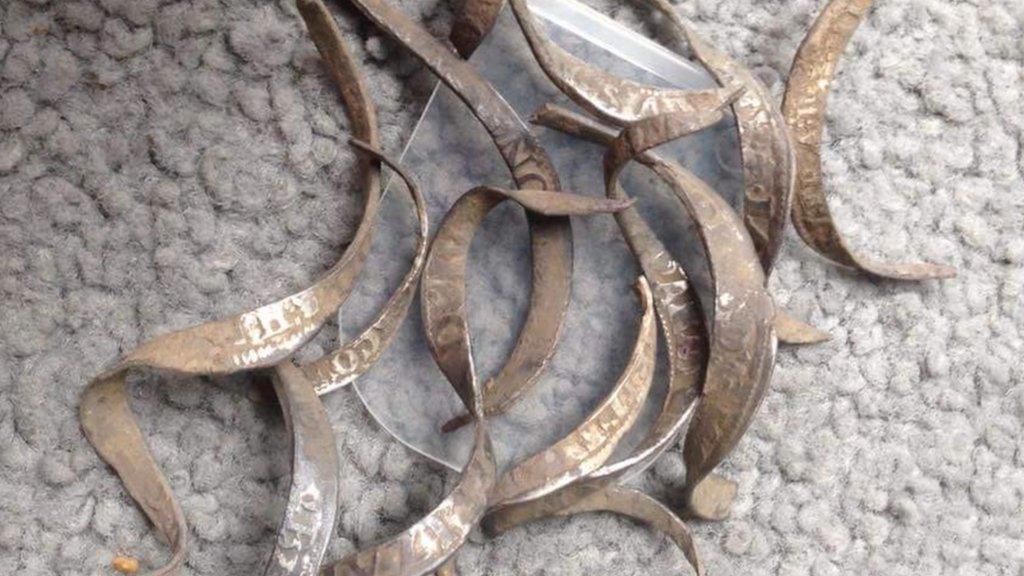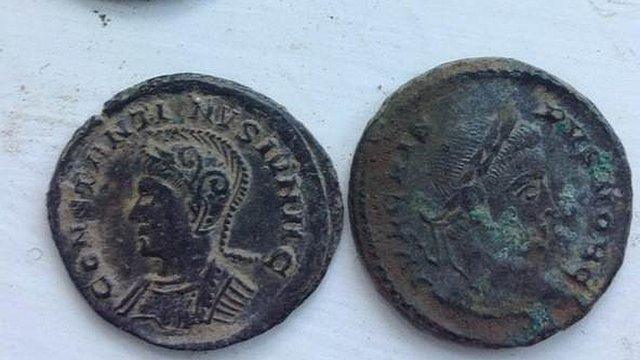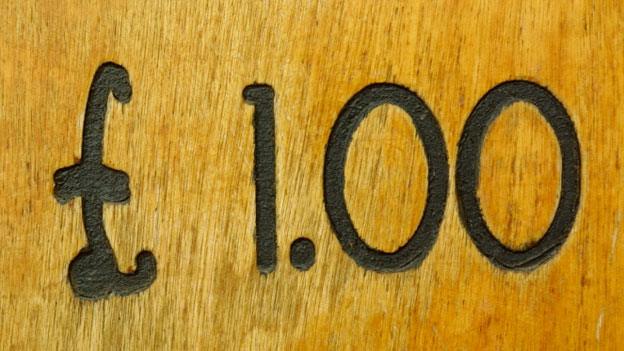'Toenail Hoard' of 500 coin clippings found in Forest of Dean
- Published

The 500 silver clippings were unearthed in the Forest of Dean by metal detector enthusiast Gavin Warren
Hundreds of 16th Century coin clippings have been discovered in a Gloucestershire field.
The 500 silver clippings, dubbed the Toenail Hoard, were unearthed by Gavin Warren using a metal detector in the Forest of Dean.
Shaved from the edges of coins dating back to 1560, the precious metal would have been melted down and sold.
Finds liaison officer Kurt Adams said: "Forty to 60 clippings is normal - one of this size is very, very rare."
Mr Warren - who unearthed the Yorkley Roman coin hoard in 2012 - said he was testing out a "beginner's metal detector" in a field, when he made the discovery.
"It was about four inches down, all in a big ball - we thought it was pieces of fencing until I spotted the words James I and Elizabeth I," he said.
"There were about 500 clippings - like pig tails - ranging from half crowns right down to pennies, all silver."

The earliest clippings date from the 1560s to 1570s and the latest from 1645
With hanging literally too good for those caught clipping the edges off silver coins in the 17th Century, Mr Warren said whoever buried the hoard had been risking their life.
"For women the punishment was being burnt at the stake, for a bloke it was being hung, drawn and quartered," he said.
"It would have been a lot to have been caught with."
Mr Adams, from the Portable Antiquities Scheme, said the hoard, currently being catalogued at the British Museum, was not only "one of the biggest" but a "fantastic bit of social history".
"The earliest clippings date from the reign of Elizabeth I, so 1560s to 1570s, and the latest from 1645," he said.
"It showed people were defrauding the Mint when it was enormously important that coins weren't tampered with in any way - so it's an incredibly rare find."
- Published27 July 2015

- Published14 February 2014
